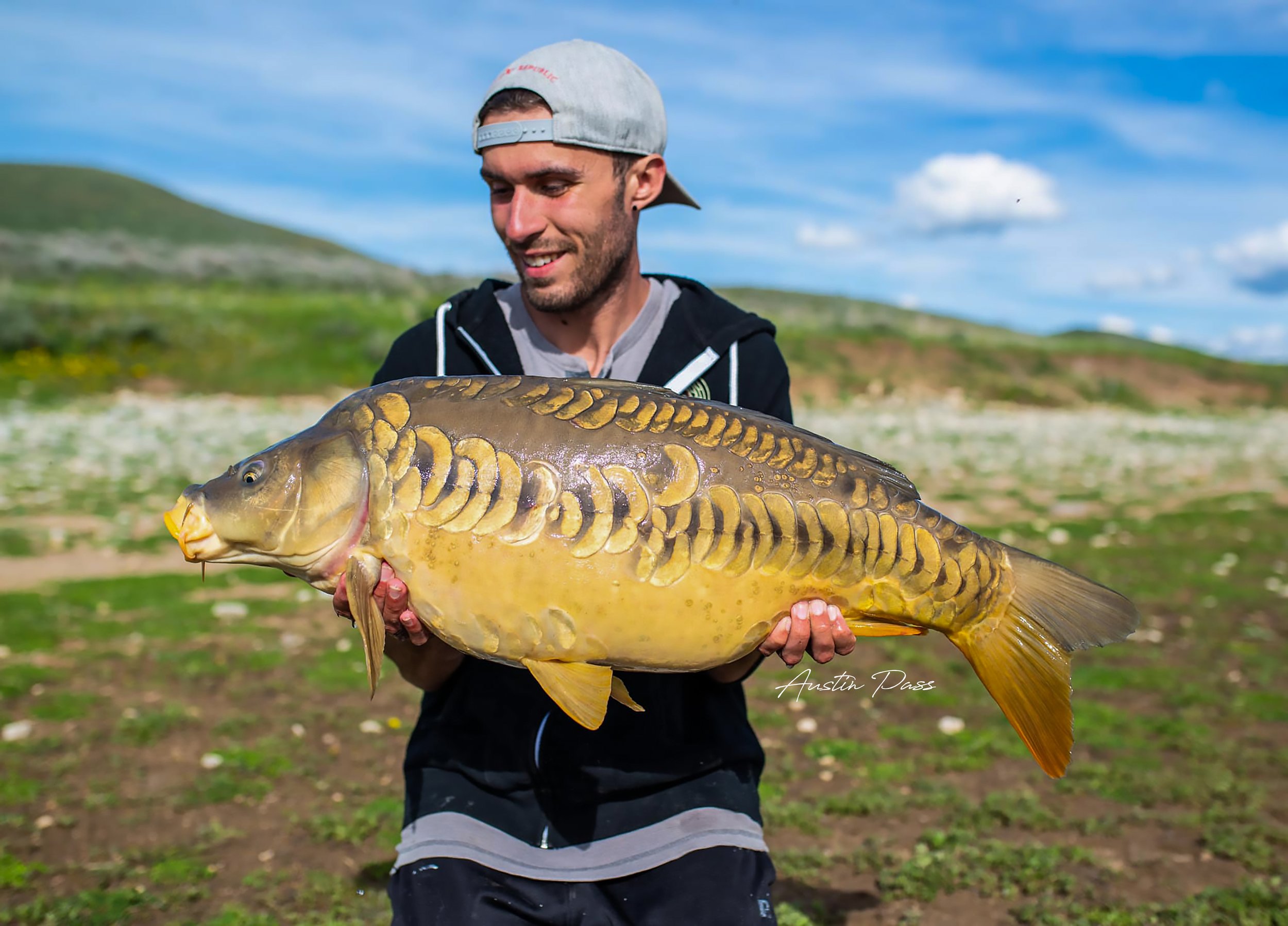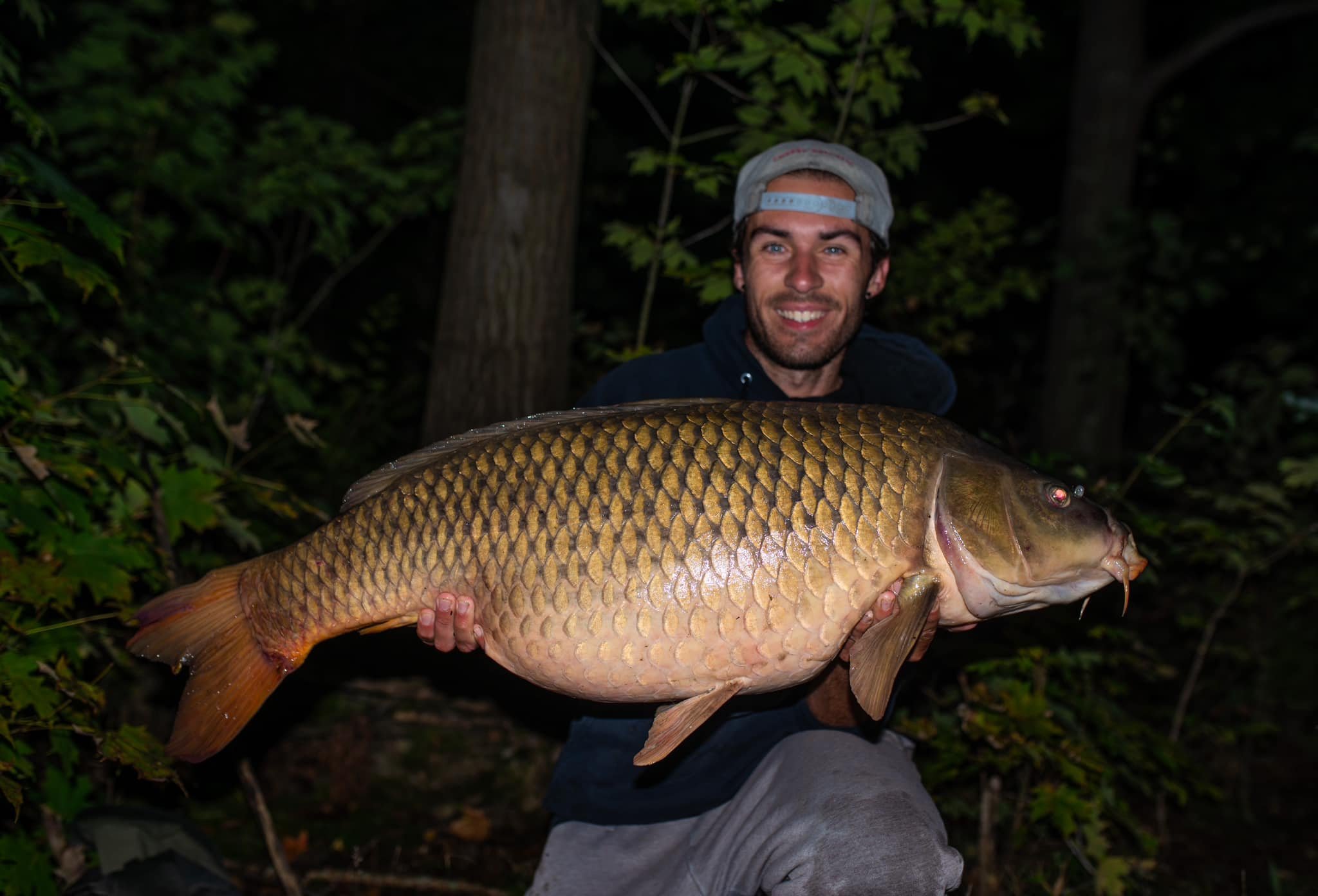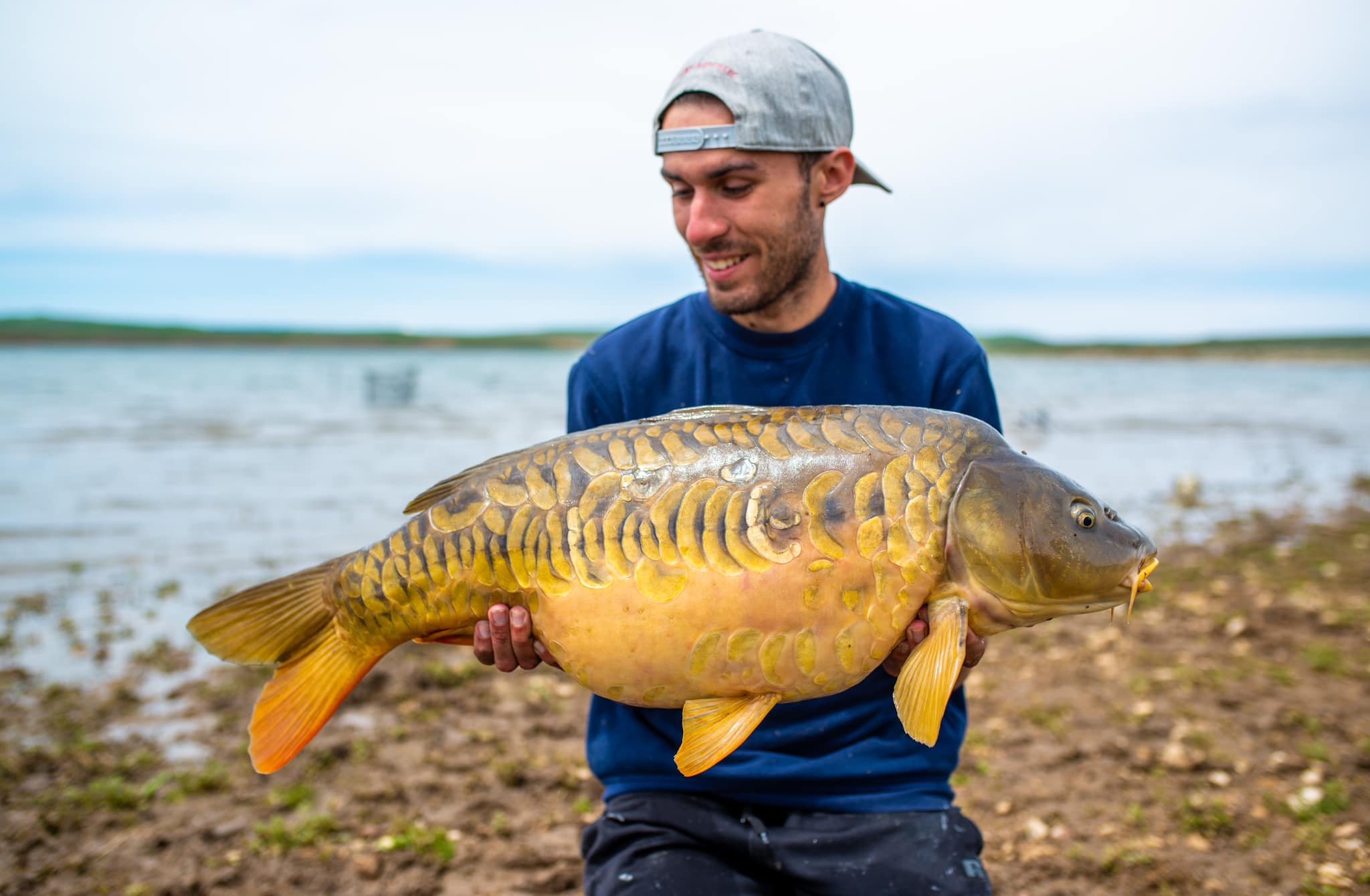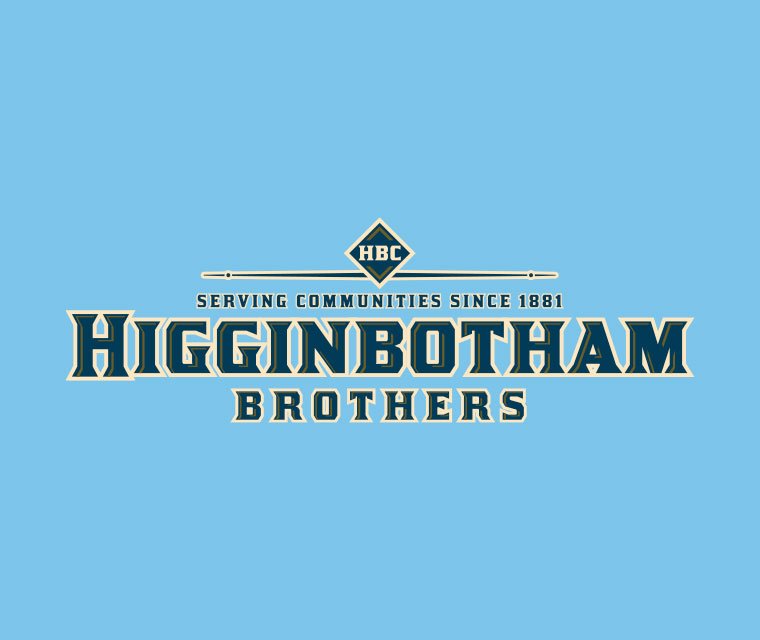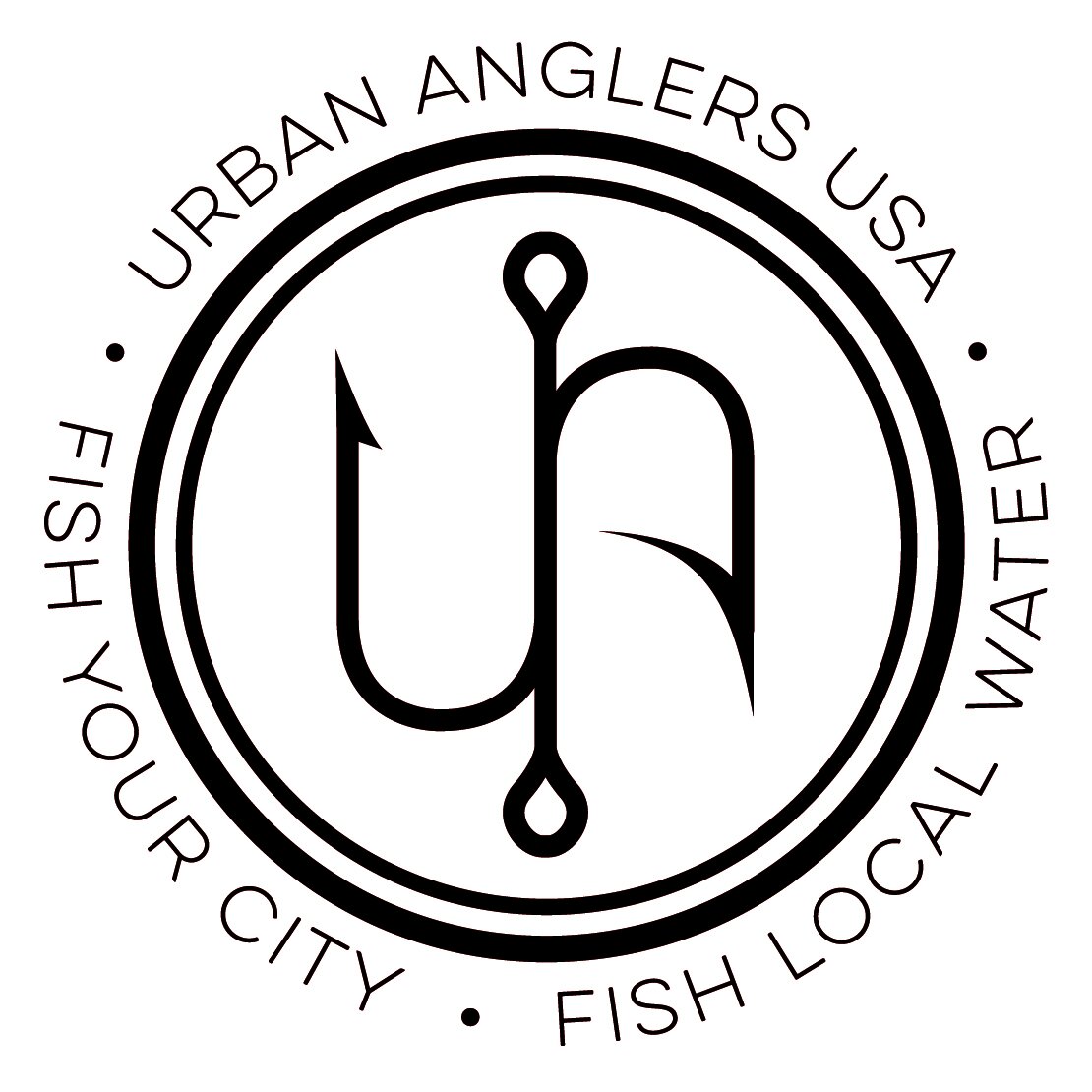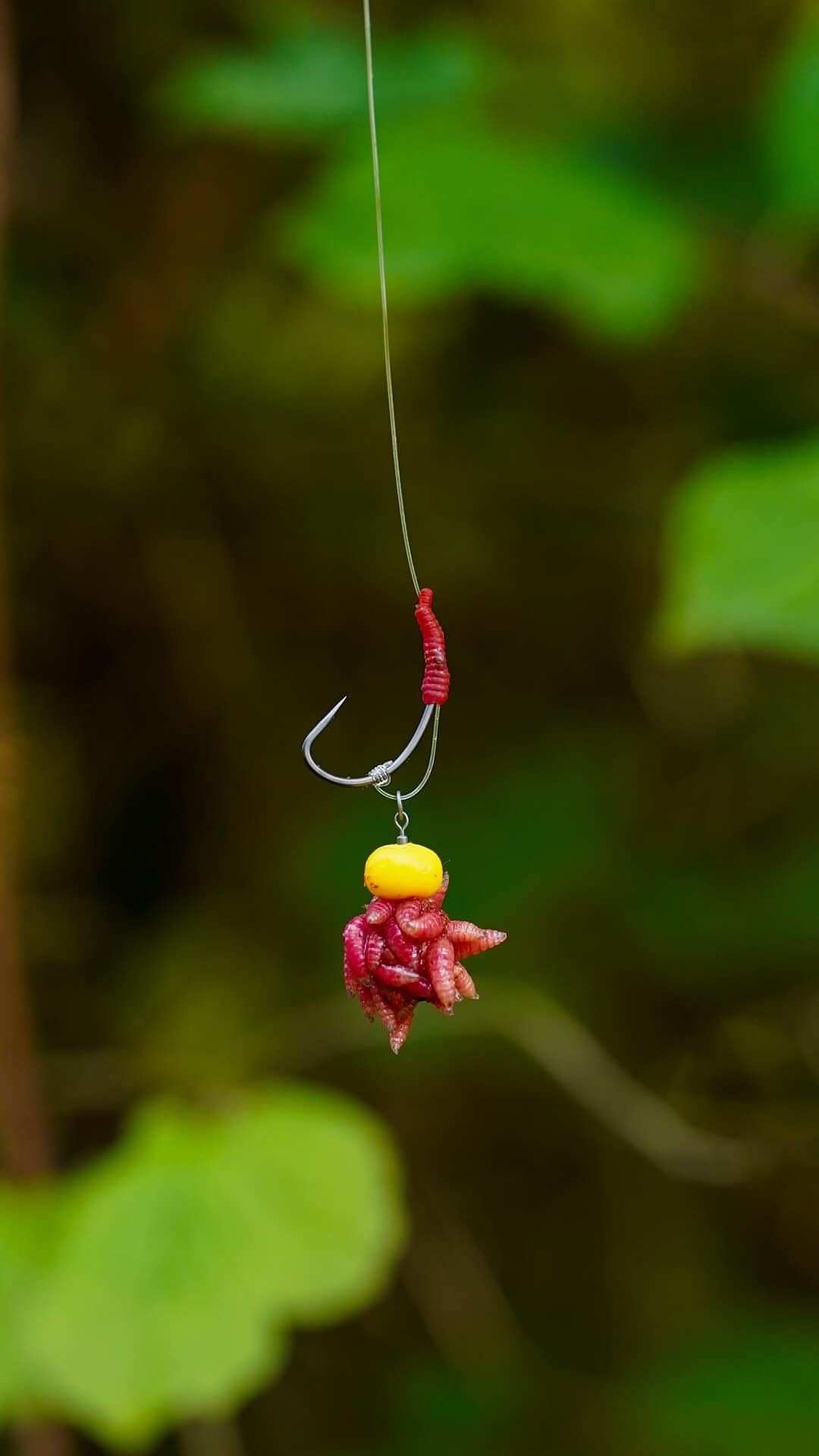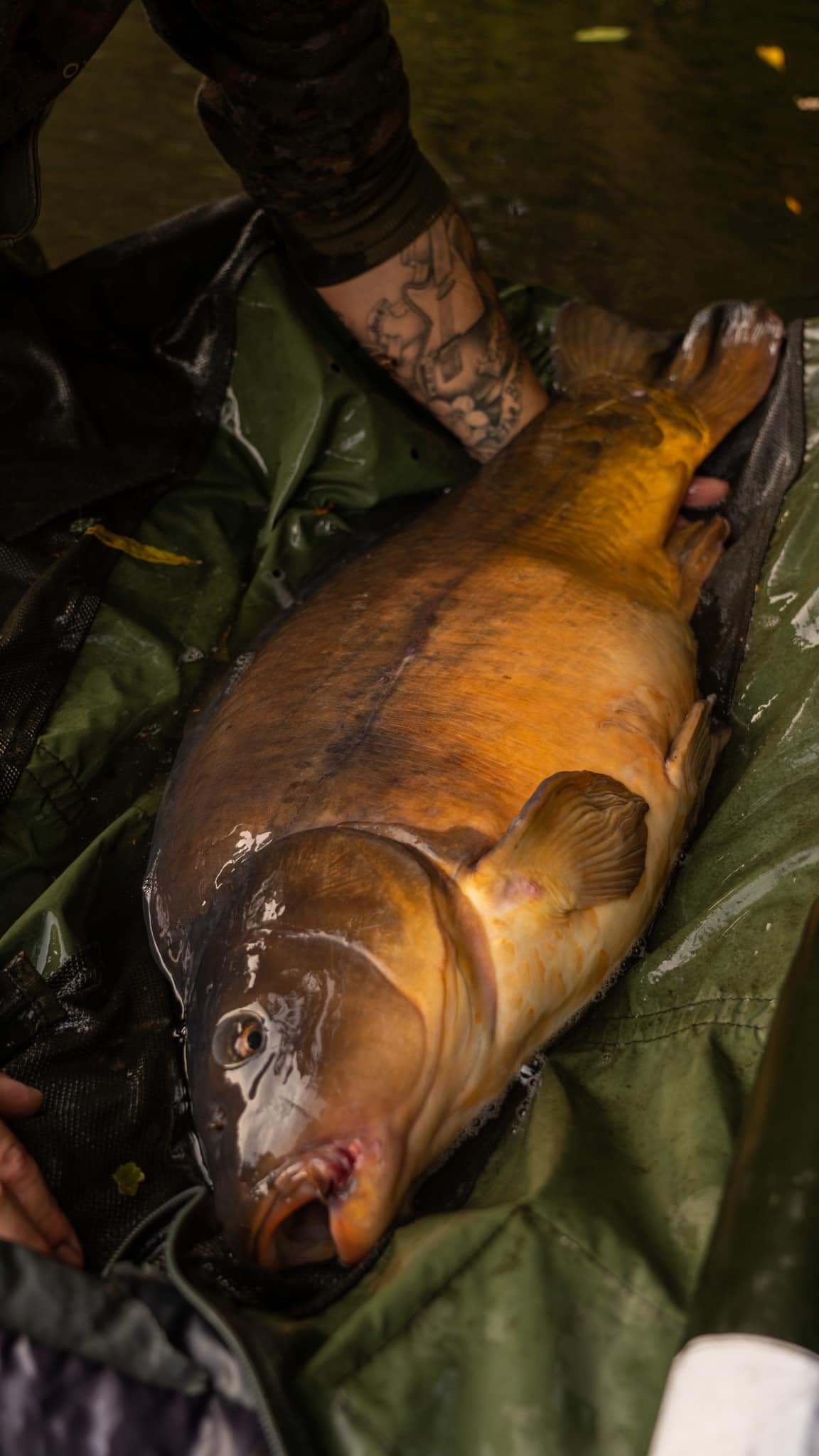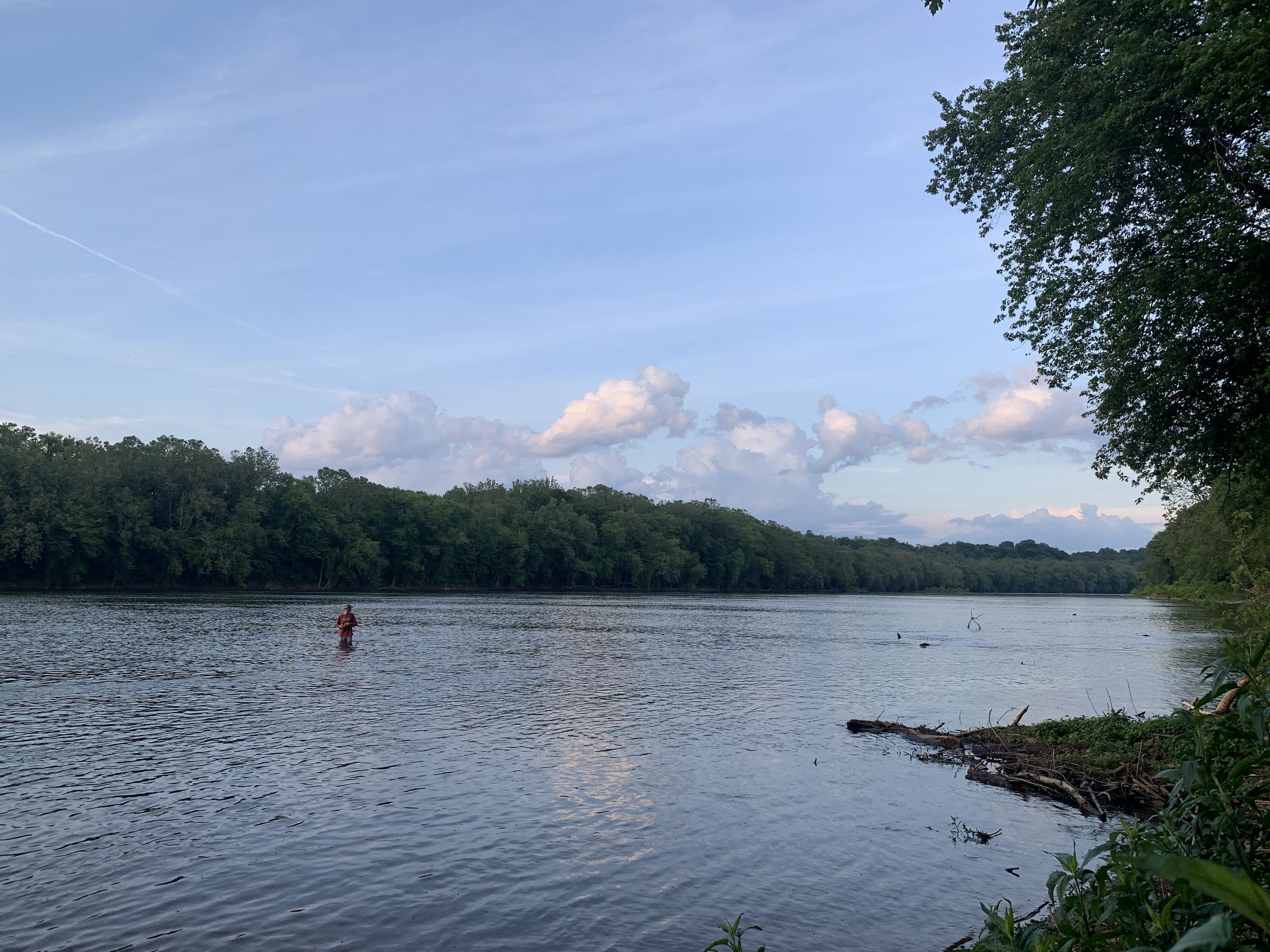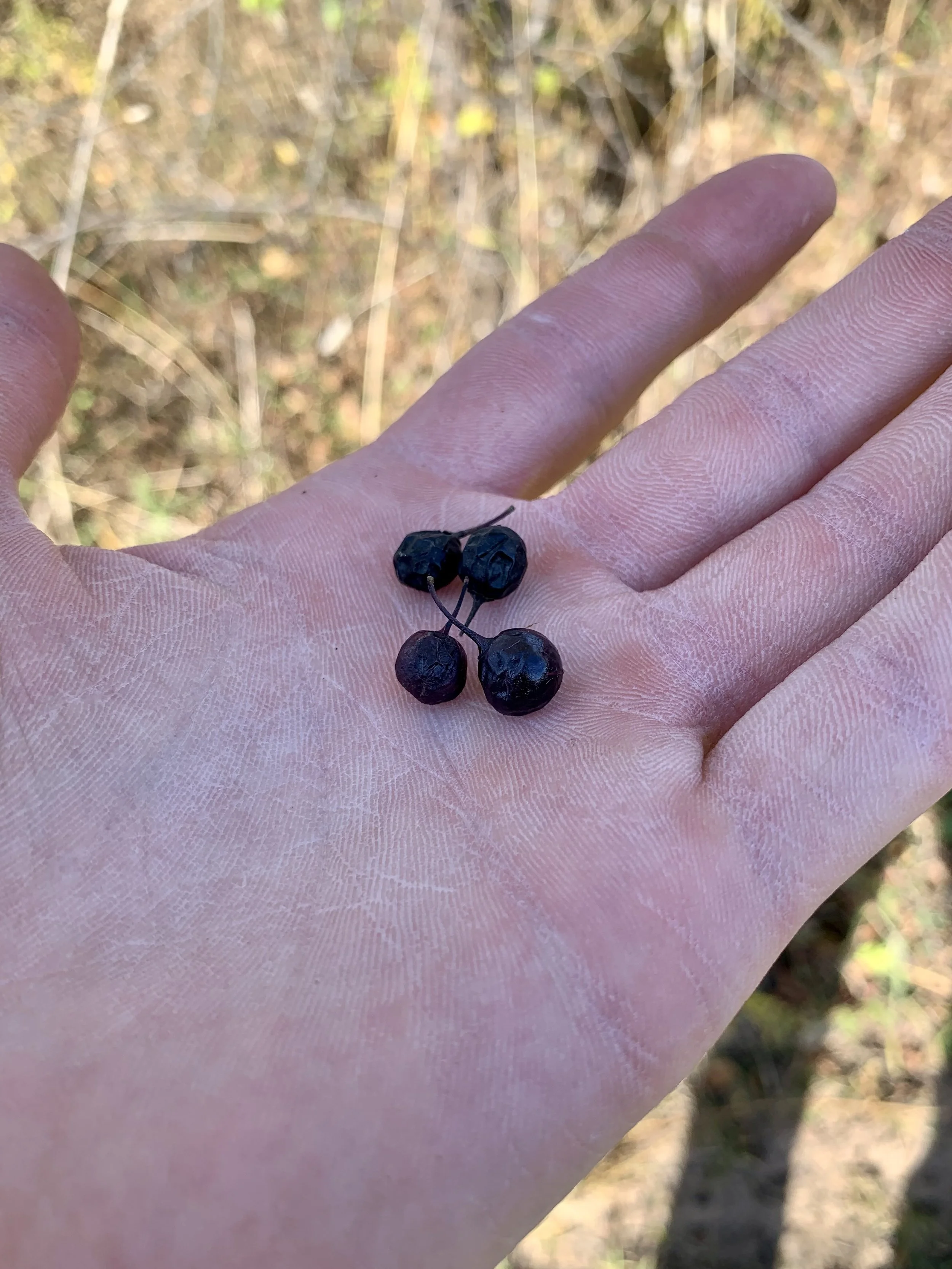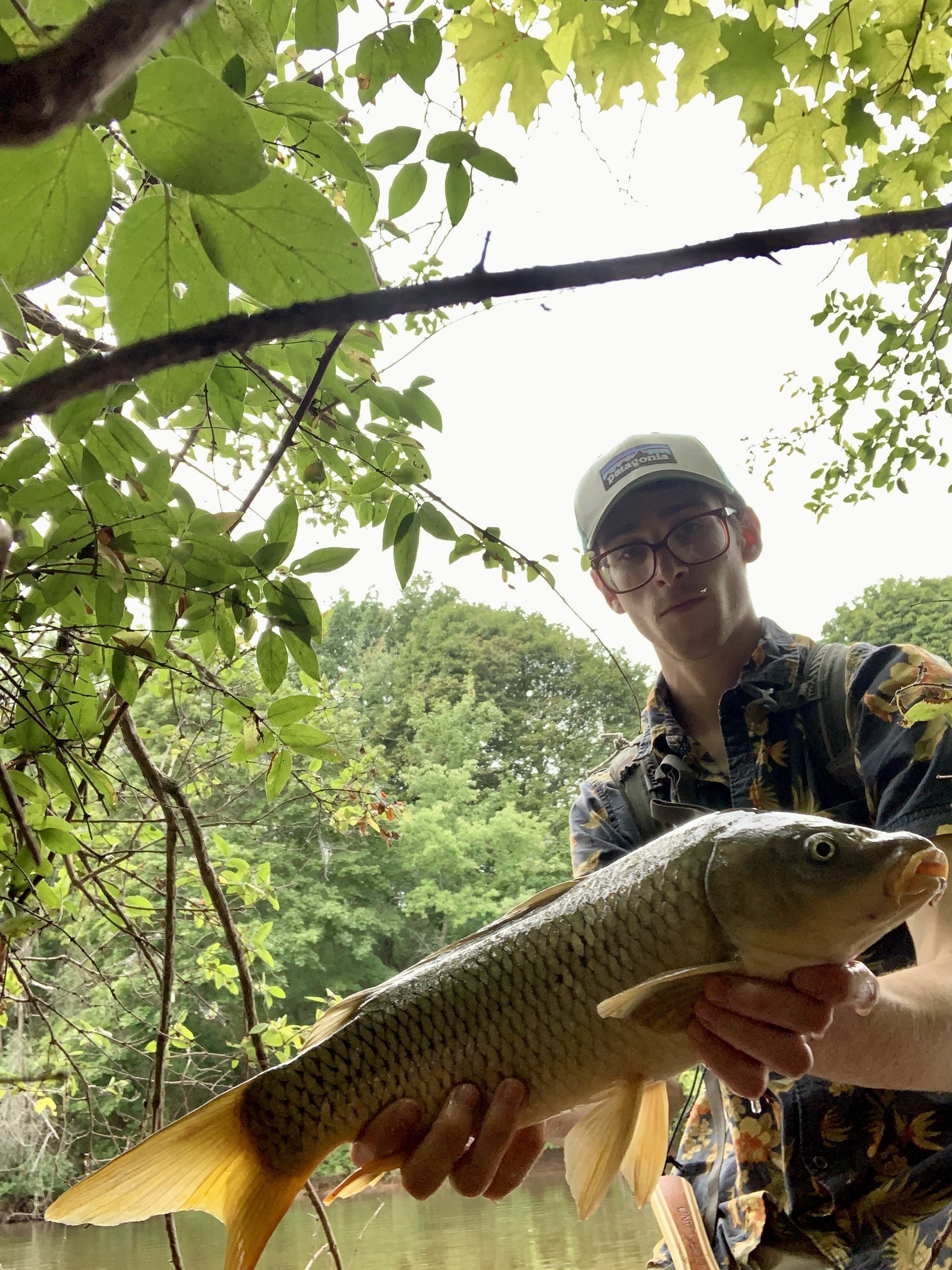Austin Pass
Our Angler of the month for November is Michigan’s Austin Pass! One of the USA’s very best representations of the sport, Austin and his brother Brendan have both had some incredible sessions this year and this shot represents one of them! Traveling across the country and pioneering some new waters, as well as visiting some of the country’s well known gems, we have to doth our cap to the brothers Pass this year for their continued representation of the sport!
This picture shows just one of the stunning Mirror Carp that Austin and Brian caught on their session together…preparation and location skills paying off! Very well done Austin…on another incredible session!
Click HERE to check out Austin’s Insta page for some more great shots!
NOTABLE CAPTURES
The Fall is here!…October colors have been wonderful in many parts of the USA and some of the fish captures truly stand out because of this! We are seeing some larger fish being caught as they will now start feeding heavily in preparation for the Winter months. These photos below caught our attention in the month of October and so we thought that some extra recognition was warranted. Congratulations to everyone on the success of their angling sessions this past month…We appreciate all of your tags and mentions, and can’t wait to see what everyone is catching over this next month! Don’t forget to tag us #americancarpsociety #jointheguiltyones and tag @american_carp_society in your stories!
The 2022 Mill Creek Cup
This month sees the 4th annual Mill Creek Cup Tournament in the great city of Canton, Texas. 50 Carp anglers from 13 different states will be traveling across the country to fish this great lake and will be competing once again for both Cash and Tackle & Bait Prizes.
Mill Creek is a notoriously challenging lake that holds some very special fish, but they do not give themselves up easily and will test the angler to their limit, bringing out the very best in each of them…as many former contestants will attest to.
This year is set to be a very special event as we have the entire lake open with 10 new pegs (26 in total) that have never been fished on the West side of the lake…The great City of Canton has once again gone above and beyond in helping The American Carp Society with swim clearance and access to previously inaccessible ares of the lake that are known to be the home of some very special fish.
We will also be making some special announcements for the contestants at the event that will be made public later in the year.
A big thanks to all of our sponsors that make every year special!
‘Mapex’ 2023 Bait Range
We will also be introducing our new ‘MAPEX’ 2023 Bait Range of products for the anglers at the event, who will get a firsthand look at some new American Carp Society products!
Some great lens work coming across the social feed in October…! Big shoutout to Jake Addison and Finley Miller for these awesome shots capturing the mood!
Photo By: Jake Addison
Photo By: Jake Addison
Photo By: Jake Addison
Photo By: Jake Addison
Photo By: Jake Addison
Photo By: Finley Miller
carp on the dry
BY: LUKE WILSON
I get asked quite a bit about how one can fly fish for a “bottom-feeder.” When I explain how, and why you’d want to fly fish for carp, I've noticed how I often exclude the fact that flies on the bottom aren't the only ones that work. That comes from a mixture of disbelief from past listeners and lack of experience using those tactics myself. I too often forget to use an option that doesn't sink in front of their face. But that doesn’t mean they haven't worked for me. In fact there are occurrences where they have worked even better.
Carp do have the features of bottom feeders. Their eyes and mouth both face downwards to help them slurp up a meal as they pass by the bottom. Looking at those characteristics, we wouldn't think they would be the kind of fish to be feeding on the top of the water as well. But, carp do indeed feed on the top, and can do so quite often depending on the food sources available. Knowing how and when to target carp on the dry fly is an exceptional tactic to throw into the mix.
When should you try tossing a dry fly for carp? Carp are very easy to spot when feeding along the top. I don’t normally throw dry flies for these fish unless I see them actively searching or feeding on top. Keeping a keen eye along the water's surface, you will easily be able to determine if a carp is feeding. You will see an uneven disturbance of a shifting head moving along the water. Because of the carp’s bottom feeder characteristics, the eyes and lips facing downwards, the carp shifts its head and body to where now those features are on top, making it rather easy to spot a foraging carp along the surface. If you see the disturbance of a head moving, you'll know for sure where it is a feeding carp when you watch closely you'll see bright orange lips puckering in and out.
I like to imagine a “U” in front of the carp's face when I see them feeding on the surface. This is my zone to cast. It must be in front of them or within the bend of the imaginary “U” near the face of one side or the other. But, your cast must remain in front of the carp because a carp hardly ever sits still while feeding on top. They usually keep at a slow pace in search of the next floating meal, although I have seen them wait in a current and allow the food to come to them instead.
Now, what kind of food sources can carp find along the surface? The food available on top is just as diverse as it is along the bottom. To start, carp will eat both insects, cicadas being an example, and plant based food, such as berries or cottonwood, along the surface. They are omnivorous fish. Carp aren't picky fish, but they are very suspicious, so try to match the specific food source at the moment.
In the past, I had taken a trip to the Upper Potomac River. I broke my fly rod the second night there on a carp of godly sizes. There were two carp I had seen from shore, sucking down cicadas as they drifted by. I bet they were in the upper half of the twenties, a true trophy fish on the fly rod, so it stung even more once they got away. The cicada hatch was insane that year. The great hatch of 2021, “brood X”, the largest hatch in quite some time and sadly we must wait until 2038 until the next hatch of that size. I remember seeing them all over the ground like leaves in fall, with similar warm colors of orange and red. The sound they made was constant, I didn't mind the buzz of summer, it was honestly quite soothing and reminded me of my youth. I would listen to them in the dog days of summer after a long day of doing nothing with a big glass of lemonade poured from a pitcher my mother had brought out. But when I walked outside and had five or six hit me in the face it was a different feeling. Carp were eating the cicadas as they fell in the water and drifted with the stream pushing them towards the barbels and opening mouths of their impending doom. Sometimes the carp would show a quick burst of energy, lock in on their next morsel, and change positions horizontally to grab a cicada that was quickly floating away. Most of the time though, these fish seldom moved at all and, with a short motion, swayed their open mouths side to side to collect what was being given to them. I threw on a dry fly in hopes I could copy the floating bugs, and although it wasn’t a cicada fly it still was enough to look like a meal they could desire. The carp took my fly and before I could blink, my only fly rod I had brought was snapped in half.
As I said before, carp also enjoy eating fallen plant matter. There was a spot I had fished quite a bit, one of my favorites to hit, and there was always carp there. I didn't understand why every time I went, I saw carp there. Come to find out, they set themselves under a berry tree. This is a substantial food source and it is always going to be there for them to sit under. The tree dropped dark purple berries in the water. I found that I could cast a foam berry fly and it would be taken from the top consistently.Like Pavlov’s dogs, the splash of the berries falling, or my fly, triggered a feeding response. I had also tried weightless flies so they sank very slow and they would be taken before they made it more than a foot under. Although, be sure to match the food source, these are weary fish and they are hard to trick. I got too cocky at said location, and tried throwing a red berry fly instead, and they must've known immediately that my fly did not belong with the purple berries. I could get a sniff, but time after time it was rejected. When searching for a spot to try for carp on the dry, find an overhanging tree, or shrub, that drops things such as berries or nuts into the water. It's like a feeding station.
Cottonwood seeds are another source of food for carp. In the transition of spring to summer, cottonwood falls like snow, coating the water in a thick film. In the past I found the coating of the water quite aggravating. The cottonwood would cover my line and stuff up the eyes of my rod. But, carp near me love this stuff. Fishing cottonwood is a different style of fishing, and may take some getting used to. When cottonwood is at its peak there’s so much of it covering the water, the carp just eat at it randomly. The carp rave over these clouds of it sitting atop the water. During the cottonwood season it is a great time to go for carp on the dry. You must pick a target, the bullseye being immediately in front of the orange lips. Cast in front of their face using the “U” as a guideline and they should eat their way to it if you’re lucky. Make sure they take it, it gets very difficult to tell when your fly becomes invisible in the shroud of white. In this particular style of targeting carp, they are not seeking out your fly, they can't even tell it's there, so placement and timing are the biggest components.
Don’t shy away from something because you don't know how to do it. We all have to start from somewhere, and the best way to gain that knowledge is by getting the experience. I didn’t know how to go about chasing carp on the dry fly until I put the time in for it. Most of my trips ended poorly, but even in defeat experience is gained. I know from those experiences carp can be caught, and efficiently, on the dry fly. I've seen carp eat both insects and plant based foods. It came down to matching the food source. Over time, and after witnessing what can work, I began dialing in my tactics. The imaginary “U” in front of the carp's face is one that came along the way. What to look for to find carp feeding along the surface is another. Don't be afraid to experiment and try different techniques, broaden your skills.
on sale!
All of our Winter beanies are are now on sale in the store!



